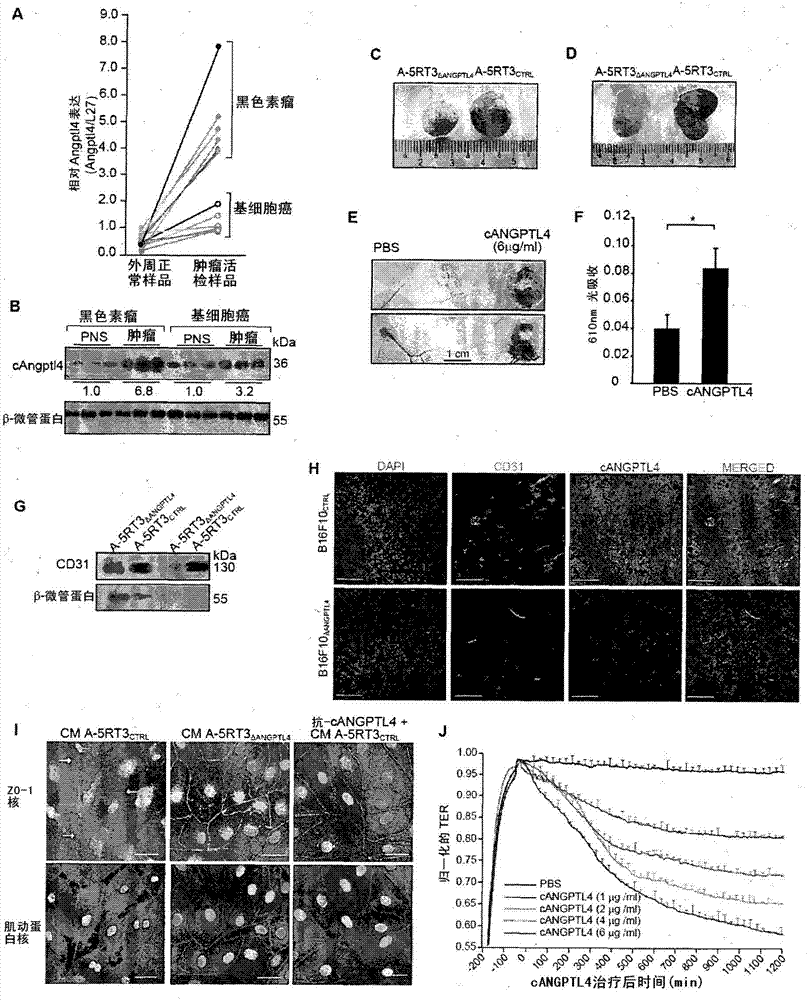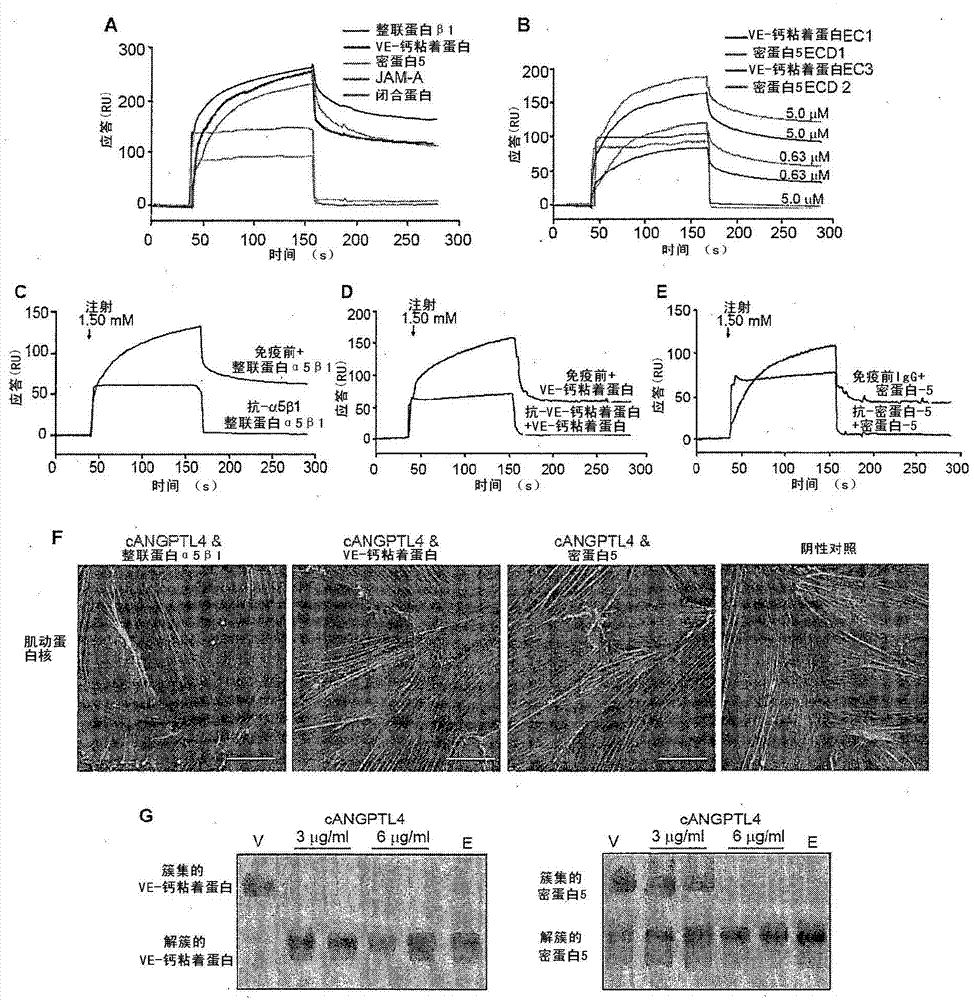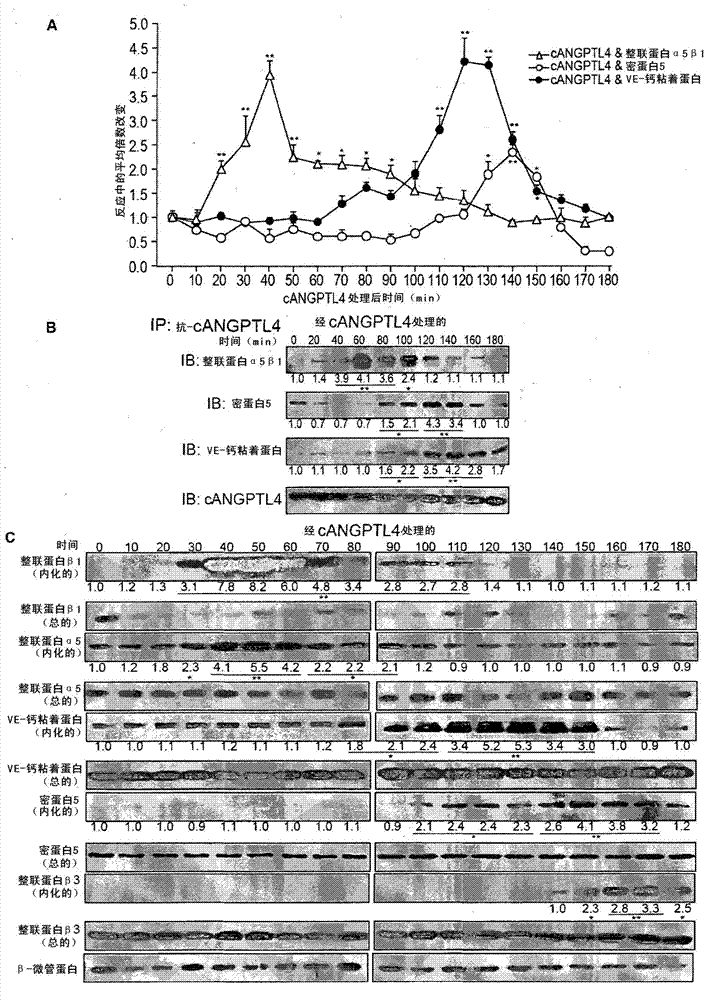Angiopoietin-like 4 and its use in modulating cell leakiness
An angiogenin and blood vessel technology, applied in medical preparations containing active ingredients, extracellular fluid diseases, cardiovascular system diseases, etc., can solve problems such as disputes over the exact role
- Summary
- Abstract
- Description
- Claims
- Application Information
AI Technical Summary
Problems solved by technology
Method used
Image
Examples
Embodiment
[0100] Materials and methods
[0101] Antibody.
[0102]In-house preparation of PAK1 and pPAK1 (Ser199 / Ser204) (Cell Signaling, USA), integrin β1 [JB1A], α5β1 [JBS5], β3 [2008] and c-Jun (Millipore, USA); CD29 / activated integrin protein β1 [HUTS-21] (BD, USA); β-tubulin, β-catenin [12F7], EGFR [1005] (Santa Cruz Biotechnologies, USA); VE-cadherin [BV9], claudin -5 (Abcam, USA); CD31 (DAKO, Denmark); Occludin (Invitrogen, USA); ZO-1 (Zymed Laboratories, USA); Tie1, Tie2, JAM-C, β-tubulin, horseradish Oxidase (HRP)-conjugated goat anti-mouse, HRP-conjugated goat anti-rabbit, HRP-conjugated donkey anti-goat (Santa Cruz Biotechnologies, USA); mouse monoclonal anti-human cANGPTL4mAb4A11H5 and rabbit polyclonal anti-human cANGPTL4 was generated in-house16; secondary antibodies Alexa Fluor488-conjugated goat anti-rabbit IgG and Alexa Fluor594-conjugated goat anti-mouse IgG (Molecular Probes, USA) were also used.
[0103] cell culture.
[0104] Primary human microvascular endothel...
PUM
 Login to View More
Login to View More Abstract
Description
Claims
Application Information
 Login to View More
Login to View More - R&D
- Intellectual Property
- Life Sciences
- Materials
- Tech Scout
- Unparalleled Data Quality
- Higher Quality Content
- 60% Fewer Hallucinations
Browse by: Latest US Patents, China's latest patents, Technical Efficacy Thesaurus, Application Domain, Technology Topic, Popular Technical Reports.
© 2025 PatSnap. All rights reserved.Legal|Privacy policy|Modern Slavery Act Transparency Statement|Sitemap|About US| Contact US: help@patsnap.com



